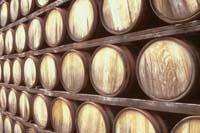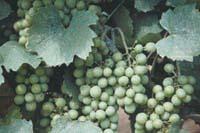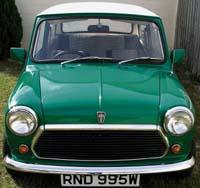Wine to feed cars
2007/07/14 Galarraga Aiestaran, Ana - Elhuyar Zientzia

The biggest producers of wine in Europe are Spain, Italy and France, and many wines without outlet in the market become bioethanol. Spain is the country that produces this type of fuel the most. In fact, at the beginning of the year the first bioethanol production plant that uses only wine was inaugurated in Castilla-La Mancha. Acciona is a biofuel company that plans to make 33 million liters per year.
Bioethanol is made from raw materials high in sugars or starch, such as corn, beets, sugar cane and cereals. In addition, the European Union promotes plantations aimed at producing bioethanol as a substitute for fossil fuels. The European Union wants 20% of the fuel used in the transport sector to be obtained from renewable sources by 2020.
Bioethanol, renewable fuel
In fact, the transport sector is practically dependent on oil. Bioethanol, on the other hand, is of vegetable origin, renewable and is used in two ways in transport. On the one hand, as a substitute for lead in lead-free gasoline. Its objective is to avoid the spontaneous combustion of fuels in the engine. This does not require much bioethanol. Therefore, from the environmental point of view it is more interesting the second application, which replaces gasoline or diesel.
At the moment, bioethanol cannot be used only instead of petroleum fuels, but mixed with them. There are already gas stations that contain between 5% and 10% of bioethanol. They are called E5 and E10 and can be used in any car as they do not affect the engine. Mixing bioethanol in more than 15% requires special engines.

(Photo: Saab)
Ford, Saab, Volvo and other autocompanies have cars that support bioethanol. They are called FFV (Fuel Flexible Vehicles or Flex Fuel Vehicles) and can use petroleum or bioethanol fuels in a ratio of 85%. This fuel, called E 85, is highly beneficial to the environment, since its use in cars, in addition to being largely renewable, is emitted to the atmosphere less carbon dioxide (almost 80% less) than gasoline.
These are at least the data provided by companies and organizations that drive bioethanol. They also note that it also benefits the agricultural sector, as farmers have the opportunity to grow various plants to produce bioethanol. In addition, agricultural waste and surpluses can also be used to make bioethanol, as well as unsold wine. In fact, a quarter of the bioethanol produced in 2005 comes from wine, twice the previous year.
To drink, do not smoke
This trend will remain in the future, as there is no other way to achieve the fuel targets set by the European Union. In addition, in Europe the demand for biofuels is much higher than supply. In the world, the US and Brazil produce more bioethanol, with 16.6 and 15.5 billion liters, respectively. European production does not reach one billion liters. Thus, the European Union grants aid for the production of bioethanol.
Raw materials may be other, but do not discard wine. For example, the newly opened facility in Castilla-La Mancha Acciona uses only wine for the manufacture of bioethanol. Specifically, the raw material is a 92 degree distilled wine alcohol, thus achieving a 99.9 degree bioethanol. To do this, they remove sulfur, water and methanol alcohol.

This bioethanol is appropriate to mix it with the fuel of vehicles. Moreover, according to Acciona, burning bioethanol does not increase global warming. In fact, the amount of carbon dioxide generated in combustion is equivalent to that absorbed by the strains from which wine comes.
In any case, subsidies for the production of bioethanol from wine have sparked debate. Many criticize
That aid granted for distillation of rdo surpluses have fostered excessive wine production. Instead, they think it was better to allocate money to other goals, such as improving wine quality or lowering its market price to increase sales.In line with these criticisms, the latest EU wine distillation subsidies are not for all wine producers, now only bioethanol producers will receive aid. This will enhance the production of bioethanol, without facilitating excessive wine production. In addition, the European Union will also grant aid for the elimination of vineyards, with the aim of eliminating 200,000 hectares in five years. These measures have generated a debate that does not seem to calm a glass.
Published in Gara.

Gai honi buruzko eduki gehiago
Elhuyarrek garatutako teknologia





